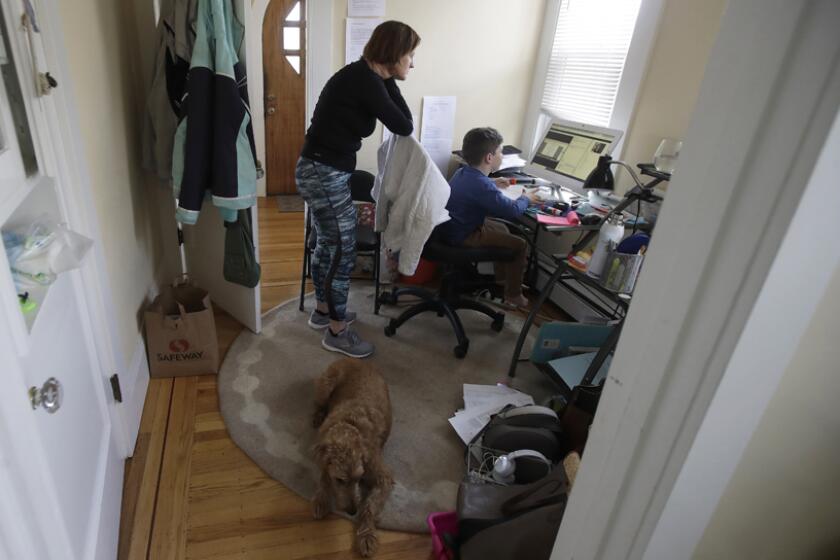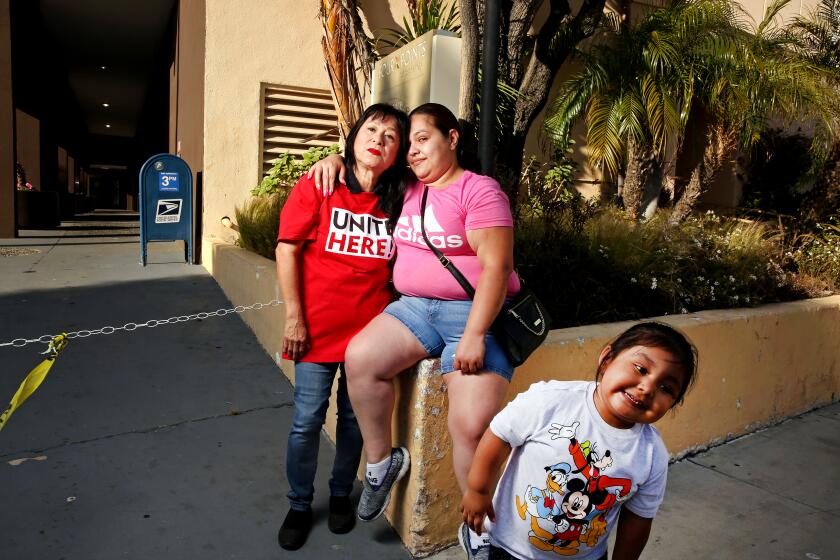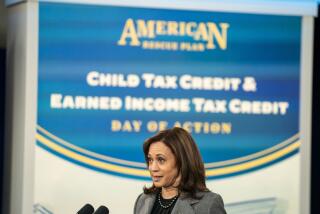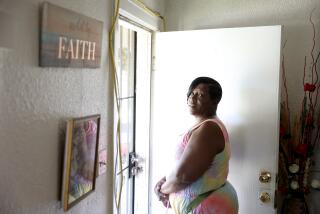Over 70,000 day-care programs at risk of closure, threatening U.S. women’s workforce gains

- Share via
The historic labor force gains that U.S. women have made in recent months are at risk of stalling or even reversing as a pandemic-era lifeline to day-care providers expires, with more than 70,000 child-care programs estimated to be in danger of closing.
The clock is set to run out at the end of September on $24 billion in government aid, hurting child-care providers already struggling with soaring costs and labor shortages. Some 3.2 million children could lose their spots, according to a recent estimate by the Century Foundation.
The centers that survive could resort to decreased staffing, reduced operating hours or higher tuition to plug the financial hole. That upheaval threatens to push parents — especially women — to work fewer hours, switch to less-demanding roles or leave the labor force entirely.
A high cost for child care “alters that calculation of whether going back to work, or continuing work, is worth it for a lot of parents,” said Sarah House, a senior economist at Wells Fargo & Co.
Labor-force participation among women ages 25 to 54 climbed to a record high this summer, and companies have more women on their payrolls than ever before.
The pandemic highlighted how crucial child care is for working parents. But the lack of options is still harming the ability of many parents to work.
Their progress was partly made possible by the reopening of day-care centers, which used American Rescue Plan funding to give wage increases, offset rising costs and make other improvements to steady their businesses.
A retreat by women from the workforce could exacerbate labor shortages in a variety of roles including air traffic controllers and teachers and, over a longer time horizon, make it difficult to replace older employees who are exiting the workforce. The Century Foundation estimates that the disruption from the so-called child-care cliff could cost states $10.6 billion in tax and business revenue per year, and lead families to lose some $9 billion in earnings annually.
“To maintain the labor force participation gains that we’ve made among prime-aged women, we need to ensure that women don’t lose access to child care,” said Sara Estep, associate director of the Women’s Initiative at the Center for American Progress.
In a 2022 survey of U.S. child-care center directors, about 43% of respondents said their programs would have to raise tuition when the pandemic stabilization funding ends.
Maria Amado, who runs a home child-care center in Hartford, Conn., has already seen how even small price hikes can lead families to make big changes.
She now charges $300 a week, up from $280 before the pandemic, as she shoulders higher utility bills and food costs. Amado said two families have left her day care because they couldn’t keep up with the payments.
The retreat by mothers with outside employment is a setback for women’s advances, both in corporate America and in narrowing the pay gap with men.
On the other side of the country, Bakersfield child-care provider Sandra Segura said she used at least $12,000 in federal funding she received to hire two assistants, each paid $16 an hour. She worries that, in the worst-case scenario, the child-care cliff will leave her without money to pay her new hires. That would have a domino effect: forcing her to cut staffing, and, in turn, reduce the number of children she serves.
“The majority of my parents, they don’t have family here, so I am basically the only person they can rely on,” Segura said.
Studies have underscored the relationship between affordable, accessible child care and women’s workforce participation. Even for those who were able to work from home during the pandemic, the increase in hours spent on child care for both mothers and fathers led to widely reported struggles with stress, mental health and productivity.
“The importance of child care for women’s work cannot be, I think, overstated,” said Claudia Olivetti, an economics professor at Dartmouth College who focuses on women in the labor market.
If child care gets pricier or scarcer, it could show up in ways beyond women cutting their hours or dropping out of the workforce.
The pandemic’s “shecession” could set back decades of progress on workplace equality, especially among Latina, Black and Asian women.
They may be resigned to take jobs that don’t match their economic potential, said Reshma Saujani, founder of the nonprofit organization Girls Who Code and its Moms First, an advocacy campaign for working mothers.
“You saw this during the pandemic — moms that were nurses had to become Uber drivers because day-care centers were shut down,” Saujani said.
Widespread day-care closures would not just weigh on women who count on the facilities for their services: They would also be detrimental for those who work in the industry. The sector disproportionately employs women, and the Century Foundation estimates that the coming cliff could end up costing 232,000 jobs.
The American Rescue Plan Act, passed in 2021, included a child-care stabilization program that the White House has said reached every state in the U.S. and helped more than 200,000 providers stay afloat.
Democratic Rep. Ro Khanna of Fremont, Calif., and South Carolina Republican Rep. Nancy Mace are forming a bipartisan caucus focused on the issue, but, for now, there does not appear to be widespread enough support in Congress for legislation that would prevent or address the coming cliff.
Little noticed, the day-care industry was bludgeoned by the pandemic. But the nation’s shortage of affordable child care has been hampering families, especially women, for decades.
After the Sept. 30 cutoff for funding, closures and other changes may not arrive immediately, but probably will pick up in the six to 12 months after that, according to Julie Kashen, director for women’s economic justice at the Century Foundation.
“Providers are going to try to make it work as long as they possibly can. They’re going to hope that states will step in, that communities will step in, they’re going to see if they’re able to raise tuition and keep people coming,” Kashen said, noting that closing would be a “last resort.”
Still, the situation compounds challenges for parents and businesses alike in what was already a broken market.
In a recent survey of 215 parents with children under 5, 59% said they or a member of their household had to cut back on work hours or leave a job because they couldn’t find reliable child care within their budget, according to advocacy group ParentsTogether Action.
Bella Magana, 27, is one parent already feeling squeezed by child-care costs. A resident of Tinley Park, Ill., she receives $500 a month through a pilot local guaranteed-income program that she puts toward the expense of her son’s care. Yet she still spends around three-quarters of her paycheck to cover the rest of her $2,000 monthly child-care bill.
She had to pull her son out of a day care last year that was closer to her home but too expensive.
“I get that sense of security and safety knowing that my child is with someone, he’s getting fed, he’s having fun and for me, that’s the most important thing,” she said. But “it’s hard to be a working parent in today’s world.”
The picture isn’t much sunnier for day-care providers. Attracting and retaining staff has been a key difficulty, given a recent run of rapid wage growth in other historically low-paid sectors. The average hourly pay for child-care workers was $14.22 last year. Starting pay at Target Corp., for instance, ranges from$15 to $24 an hour.
More than 9 in 10 voters nationwide said it’s important for working parents to be able to find and afford quality child care, according to a poll by the First Five Years Fund.
The lack of affordable, accessible and flexible child care is “a stunning oversight in our economy and by policymakers,” Commerce Secretary Gina Raimondo said at a Moms First event in July. “It is a huge drag on our economy.”
More to Read
Inside the business of entertainment
The Wide Shot brings you news, analysis and insights on everything from streaming wars to production — and what it all means for the future.
You may occasionally receive promotional content from the Los Angeles Times.














